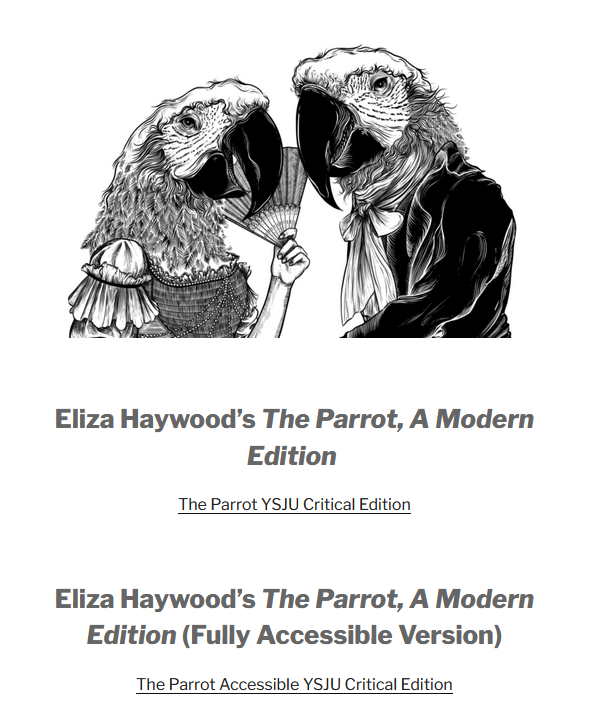My WordPress system decided to publish my notes upon the Parrot rather than reminding me to finish off the page. So, here is the updated post again.
The Parrot was republished for free on August 4th 2024 by the York St Johns University Critical Editions team, and they have enabled you to get your free copy by following the link at the bottom of the post.
Published in 1746 ‘The Parrot’ by Elizabeth Haywood was a satire on the male-dominated London Society of the time. It was published in 9 parts. The name comes from the viewpoint from a Parrot’s perch in a wealthy London house. The Parrot is an enslaved creature that has travelled the world, observer to its follies. The bird wonders why people should dismiss opinions simply on the basis of A Parrot’s green colour.
The introduction to the author by the team says:
‘Eliza Haywood (c. 1693-1756) was one of the first generation of writers to “live by her pen.” Throughout her career, Haywood adopted many roles: she was an actress, playwright, novelist and prolific essayist. However, she always used her platform to celebrate and advocate for women.‘
Here is the Guardian’s description of the book https://www.theguardian.com:
It was launched on Sunday 4th August and is available to download at:
https://blog.yorksj.ac.uk/ysjucriticaleditions/read-eliza-haywoods-the-parrot/

